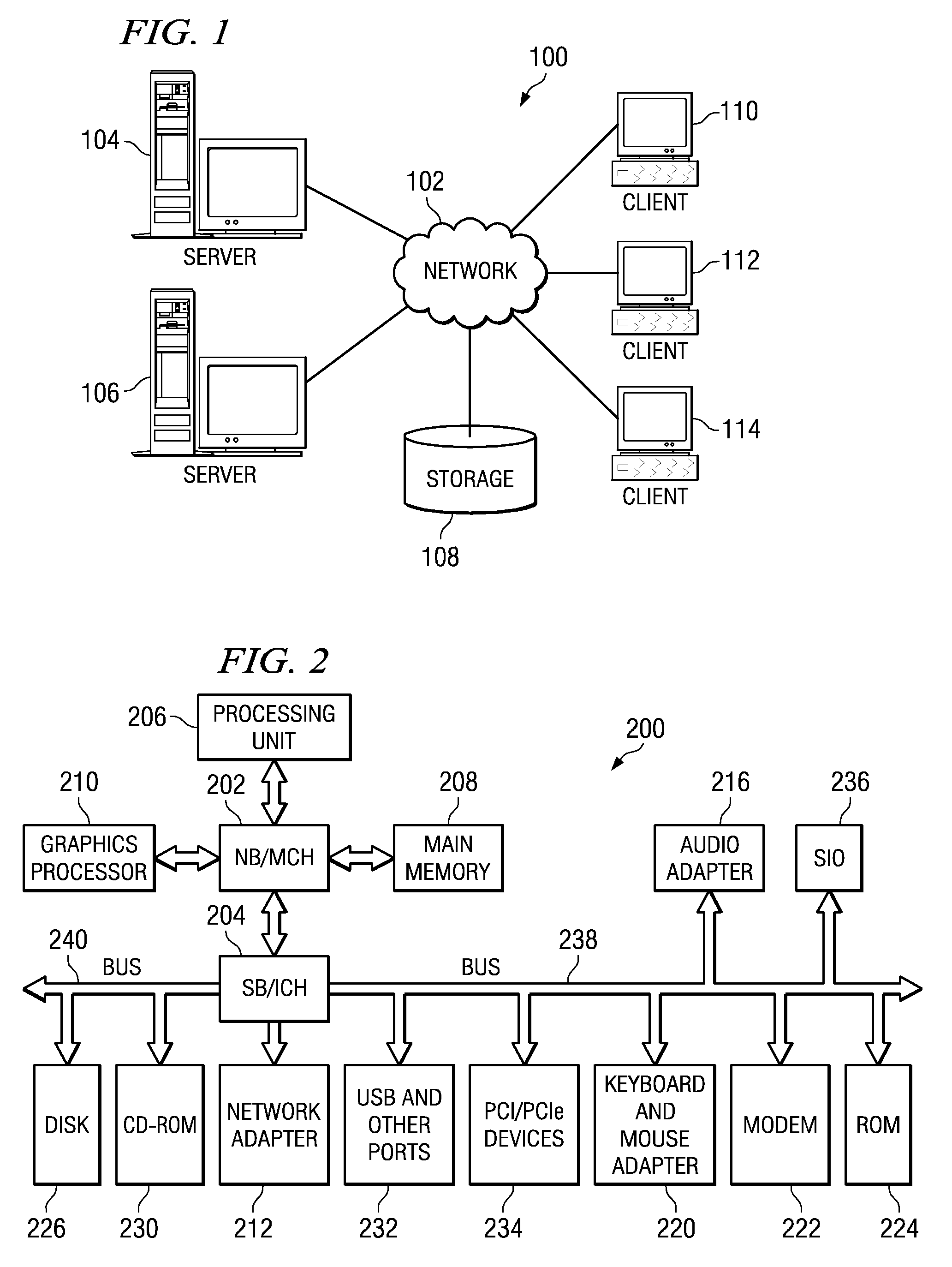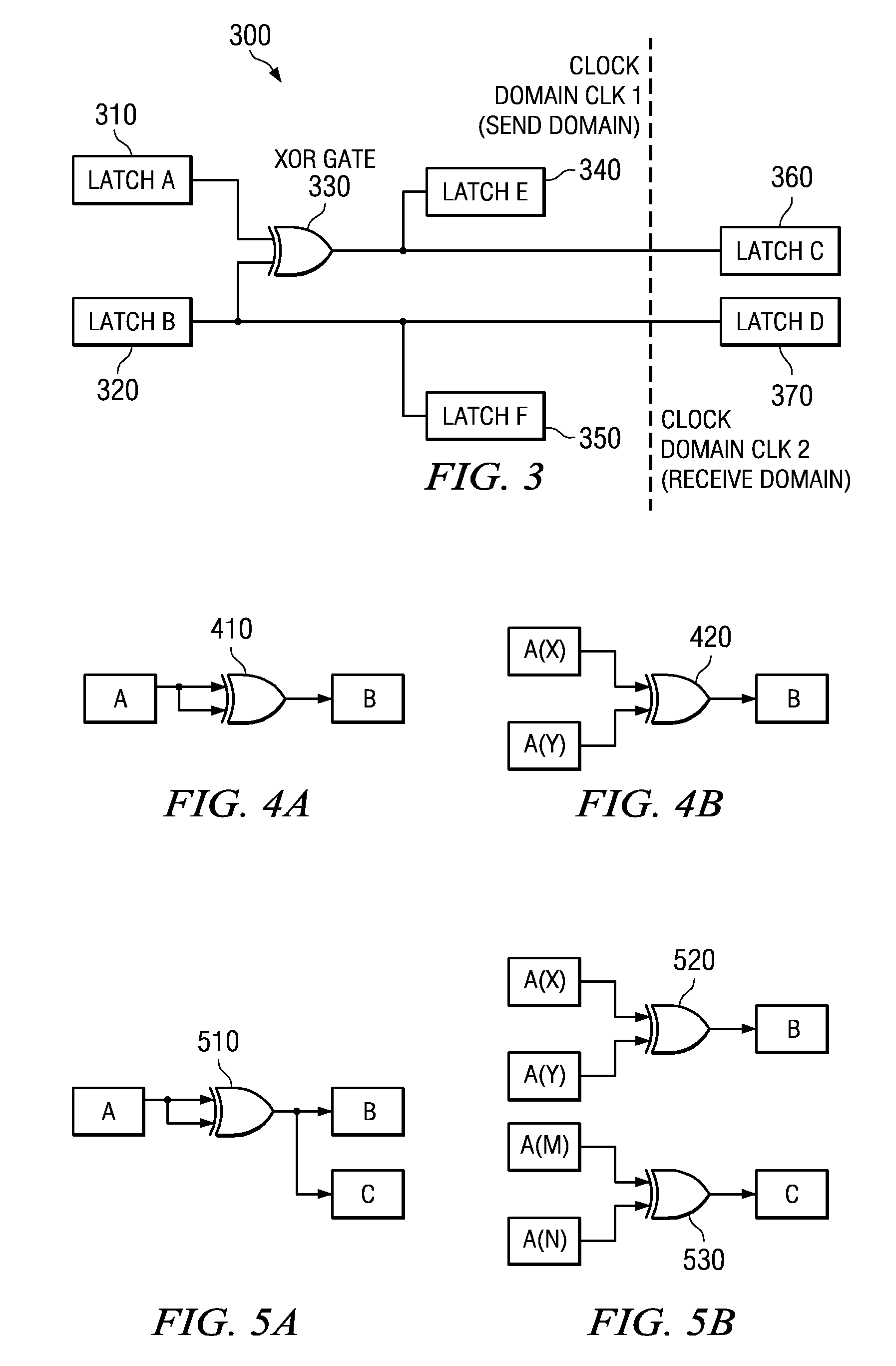Sequential equivalence checking for asynchronous verification
a technology of asynchronous verification and equalization, applied in the field of data processing system and method, can solve the problems of time-consuming and laborious development of formal test benches for asynchronous verification, and the inability of formal techniques to directly provide benefits
- Summary
- Abstract
- Description
- Claims
- Application Information
AI Technical Summary
Benefits of technology
Problems solved by technology
Method used
Image
Examples
Embodiment Construction
[0034]The illustrative embodiments provide a mechanism for performing sequential equivalence checking for asynchronous verification of integrated circuit designs. Moreover, in some illustrative embodiments, the mechanism may be used to perform verification of asynchronous buses using sequential equivalence checking. The illustrative embodiments may be implemented in a single data processing system or may be distributed across a plurality of data processing systems that are coupled to one another via one or more communications networks. For example, a server computing device may provide a circuit model analysis engine that may operate on circuit models provided by other computing devices, such as a client computing device. A client computing device may communicate with the server computing device via one or more communications networks so as to control the application of the circuit model analysis, in accordance with the illustrative embodiments, to circuit models which may be provid...
PUM
 Login to View More
Login to View More Abstract
Description
Claims
Application Information
 Login to View More
Login to View More - R&D
- Intellectual Property
- Life Sciences
- Materials
- Tech Scout
- Unparalleled Data Quality
- Higher Quality Content
- 60% Fewer Hallucinations
Browse by: Latest US Patents, China's latest patents, Technical Efficacy Thesaurus, Application Domain, Technology Topic, Popular Technical Reports.
© 2025 PatSnap. All rights reserved.Legal|Privacy policy|Modern Slavery Act Transparency Statement|Sitemap|About US| Contact US: help@patsnap.com



